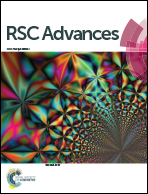Effect of DC trend removal and window functioning methods on correlation between electrochemical noise parameters and EIS data of stainless steel in an inhibited acidic solution
Abstract
For the case of stainless steel in HCl containing thiourea as a well-known organic inhibitor, the effect of a data pretreatment approach on the interpretation of electrochemical noise results, as well as the correlation between electrochemical noise data and electrochemical impedance spectroscopy parameters, were investigated in this paper. Accordingly, the impact of different window functions as drift removal methods in the frequency domain on the correlation was studied. Evaluation of the effect of five window functions implemented in NOVA software on the power spectral density plots and characteristic charge calculated from shot noise theory indicated that Hann and Bartlett window functions could be appropriate choices. Through taking advantage of the window functions, a good correlation was observed between electrochemical noise data and the results of electrochemical impedance spectroscopy. Because selecting too high and too low values for p in a moving-average removal method to remove DC trend from electrochemical noise time records was found to result in data misinterpretation, a proper p value was tried and proposed.


 Please wait while we load your content...
Please wait while we load your content...